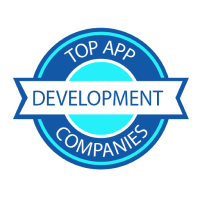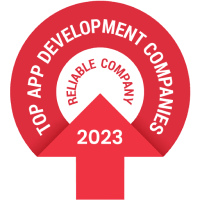Coursera is one e-learning platform that calls for careful design, technological know-how, and an understanding of the requirements of educators, learners, and educational institutions. The current explosion in popularity of online education has caused a change in people’s approaches to education.
According to experts, the online learning market is expected to increase at an annual rate of 17.53% till it reaches the astounding $848.1 billion by 2030. This suggests that business owners have a lot of opportunities in the education sector. Globalization, the workforce’s changing needs, and technology improvements all contribute to the growing demand for flexible and accessible education.
The goal of this guide is to explain each essential step needed to develop a successful online learning platform.
What is Coursera?
In 2012, Daphne Koller and Andrew Ng, two Stanford University academics, launched the well-known online learning company Coursera. They wanted everyone on the planet to have the best education possible. A vast range of degrees, certificates, and courses in business, science, technology, the arts, and humanities are available on Coursera, among other subjects. They work with institutions, groups, and colleges to offer these educational opportunities.
Coursera Operation Model
Coursera works by enabling a simple procedure that links enthusiastic students with experienced teachers. This is a detailed explanation of how Coursera operates:
Course Selection:
Users explore a comprehensive list of courses provided by esteemed universities and institutions. They can peruse course details, syllabi, and instructor ratings to make informed choices about their educational journey.
Enrollment:
Free Courses:
For free courses, learners simply click on ‘enroll for free.’ Subsequently, they sign up using their email address or Facebook account, initiating their learning adventure without any cost.
Paid Programs:
In the case of paid programs, after course selection, learners click on ‘Apply Now’ to commence their application or ‘Request more info’ for additional course details. After costs are paid, students can access the course materials.
Learning:
Students who successfully enroll get access to a variety of learning resources, including video courses, homework assignments, quizzes, and other relevant data. Because the courses are self-paced, students are allowed to proceed through them at their own speed.
Students can communicate with teachers and other students using discussion boards, which promotes a more cooperative learning environment.
Certifications:
After completion of the course, students receive an achievement certificate. While certification for paid courses is usually free, there may be a little cost to get certified for free courses. This certification is an important proof of the abilities and information learned throughout the course.
Coursera’s user-friendly approach not only facilitates learning but also creates a dynamic and interesting learning environment. Owing to its extensive array of courses offered by recognized colleges, Coursera has become the go-to platform for individuals seeking an accessible, superior virtual learning experience.
Create a Custom e-learning Platform Similar to Coursera
Perform Extensive Market Research:
Conducting thorough market research is essential before releasing your e-learning platform. Establish the target market’s demographics, needs, and level of competition. Examine potential underserved areas and look for ways to stand out from the competition.
Describe Your Unique Value Proposition:
Coursera’s success is attributed to its capacity to provide premier universities with courses of excellent quality. Identify the special selling point of your platform to make it stand out. This could include cutting-edge instructional strategies, niche subject matter, or collaborations with top business executives.
Accreditation and Licensing:
Create credibility by collaborating with respectable academic establishments. Your credentials and courses will have more credibility if they are accredited by reputable organizations and have licensing agreements.
Content Creation:
Invest in creating engaging and interactive content. This may involve developing your courses or collaborating with subject matter experts and institutions. Make sure the content you create satisfies the demands of your intended audience while adhering to industry standards.
Select the Proper Technology Stack:
You must choose the correct technological stack if you want your platform to be functional and scalable. Invest in content delivery networks (CDN), a reliable learning management system (LMS), video hosting, and other essential tools for smooth operation.
Platform Development:
Hire iOS Developers or Android one to bring your platform to life. Give top priority to features like discussion boards, video hosting, user profiles, course libraries, evaluation tools, and a safe way to make payments. It’s critical to have an intuitive design and user-friendly navigation.
Give UI/UX first priority:
Maintaining learners requires both a satisfying user experience (UX) and a well-designed user interface (UI). Make sure your platform provides easy-to-use navigation, well-defined course frameworks, and engaging interactive features.
Mobile Responsiveness:
Make sure your platform is responsive to mobile devices in this day and age. To enable consumers the freedom to learn on smartphones and tablets, think about creating mobile apps.
Encourage Community Building:
Put in place elements that help students feel like they belong. A collaborative learning environment can be established through social media integration, chat rooms, and discussion forums.
Monetization Strategies:
As soon as possible, establish your revenue plan. Select a plan that fits your business objectives, whether that means paying for courses upfront, using subscription models, or using a freemium model.
Make Security and Compliance Your Top Priorities:
Protecting user data is crucial. Put in place strong security measures, abide by data protection laws, and make sure your users are studying in a secure environment.
Thorough Testing:
Prior to launch, thoroughly test your platform. Check for usability, security, and operation, and fix any problems that may occur.
Launch and Marketing:
After your platform is set up, introduce it along with a carefully considered advertising plan. To reach your target demographic, make use of social media, partnerships, and digital marketing channels.
Collect and Act on Feedback:
Gather feedback from users and instructors post-launch. Use this valuable information to make improvements, update content, and enhance features.
Grow and Scale:
As your platform becomes more popular, think about growing it through new feature exploration, partnerships, and course additions to satisfy changing student demands.
Conclusion:
Building an e-learning platform like Coursera is a difficult task that calls for advanced technology skills, careful planning, and a deep understanding of the educational environment. It’s critical to continue being innovative, flexible, and dedicated to providing excellent instruction that appeals to contemporary students. When entering this industry, consider collaborating with a seasoned app development company. Hire Android Developers experts to make your ideas a reality. This partnership can significantly improve your eLearning platform’s technical aspects, making it easier and more pleasurable for students to navigate through your courses.











